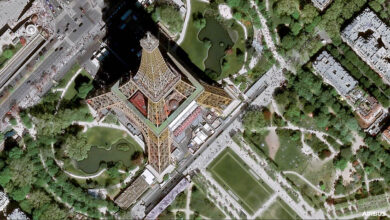Respect for ISRO is very high and NASA looks forward to having many more partnerships with ISRO: Dr. Laurie Leshin, Director NASA
By R. Anil Kumar

Bangalore, November 17. ISRO and NASA are set to launch their joint mission NISAR in the first quarter of 2024.
In a bid to better understand the impact of climate change on Earth’s ecosystems, NASA and the Indian Space Research Organisation (ISRO) are set to launch the NISAR radar satellite mission in early 2024.
The Indian space agency and its counterpart in the United States are nearing the launch next year of their joint mission, utilising the world’s most expensive Earth imaging satellite to study climate change.
Set for liftoff in the first quarter of 2024, the NASA-ISRO Synthetic Aperture Radar (NISAR) not only addresses climate concerns but also aids in forecasting earthquakes and tsunamis.
Dr.Laurie Leshin, Director of National Aeronautics and Space Administration or NASA’s Jet Propulsion Laboratory, lauded the collaboration, calling it the most significant technological partnership between the US and India in space exploration history.
“It has been so exciting to have our colleagues from JPL here in Bengaluru, working shoulder-to-shoulder with their colleagues at ISRO (Indian Space Research Organisation),” Lehsin said in Bengaluru.
Lehsin said, “We are so impressed with Chandrayaan-3 and the future plans for Indian space exploration, and we look forward to having many more partnerships between NASA and ISRO.
The respect for India’s space programme – it was already very high because India has accomplished so much in space – but now it’s off the charts.”
Dr. Laurie Leshin, Director of Jet Propulsion Laboratory (JPL) of National Aeronautics and Space Administration (NASA), USA visited ISRO Headquarters on November 15, 2023 and had a meeting with Mr. Somanath S., Chairman, Indian Space Research Organisation (ISRO) / Secretary, Department of Space (DOS).
Dr. Laurie Leshin expressed happiness over the joint efforts of JPL and ISRO officials working together as a single team at ISRO’s U R Rao Satellite Centre (URSC) in realising ‘NASA-ISRO Synthetic Aperture Radar (NISAR). NISAR’s readiness for launch and potential opportunities for future cooperation including professional exchange in technical areas and space exploration were also discussed.
NISAR Mission
- NISAR is a joint effort between NASA and ISRO, marking their first collaboration on hardware development for an Earth-observing mission.
- The JPL, managed by Caltech in Pasadena, spearheads the US segment, contributing the L-band SAR, radar reflector antenna, deployable boom, communication subsystem, GPS receivers, solid-state recorder, and payload data subsystem.
- The U R Rao Satellite Centre in Bengaluru takes the lead for the ISRO component, providing the spacecraft bus, S-band SAR electronics, launch vehicle, launch services, and satellite mission operations.
- NISAR’s comprehensive monitoring, occurring approximately every 12 days, extends beyond climate change, encompassing the dynamics of forests, wetlands, and agricultural lands, enhancing scientific understanding across various observables.
“We are so excited to be working between NASA and ISRO on NISAR, which is a radar machine to looks at the surface of the earth and how it is changing. In India, they are interested in understanding how the mangrove environment at the coasts is changing.
We will understand how ice sheets are changing and how earthquakes and volcanoes are happening all over the world…There are many different aspects to understand our earth better,” Leshin added.





